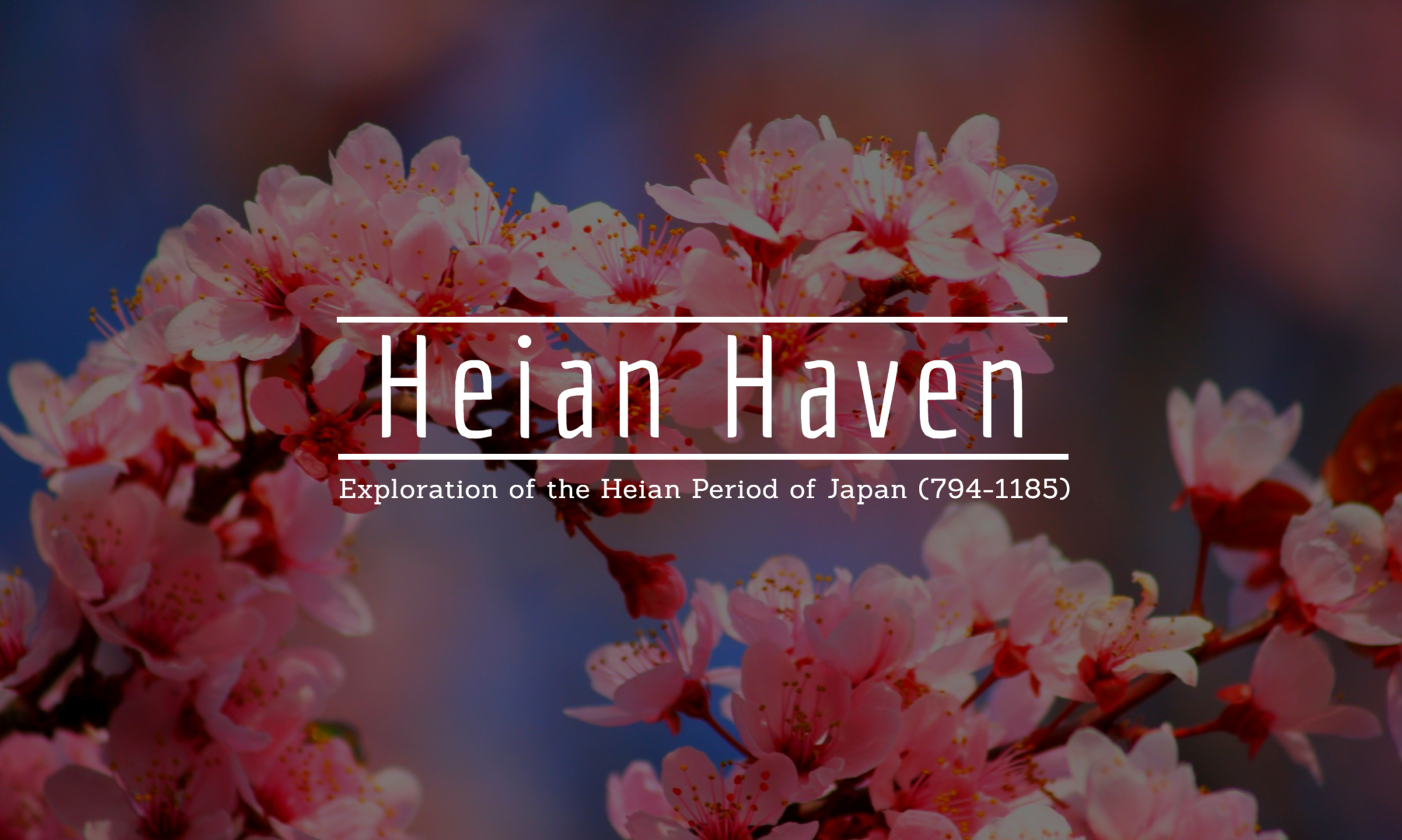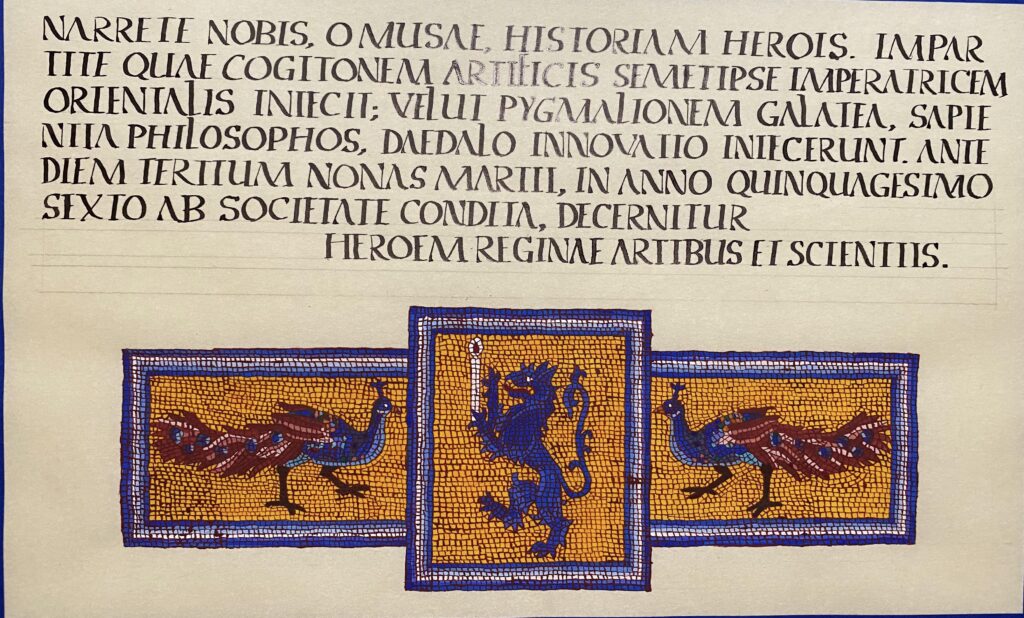
After I learned that my award scrolls for the past reign (Consort’s Champion of A&S and Order of the Maunche) had been backlogged, I had an idea. I wanted to create the document for my successor, the new Consort’s Champion of Arts and Sciences. It seemed like a beautiful end to my tenure as Champion, going out with with Art as Service. I reached out to the Sovereign’s Champion, who is also a scribe, and suggested that we make the award scroll documents for our successors. He loved the idea, volunteered to coordinate with the Signet’s Office, and suggested that our documents not “match” but instead make something in our own style.
I don’t know that I have a scribal style yet. I tend to do something new each time. And I was determined to come up with something. And while I’d love to create a Heian inspired scroll, it’s not right. This is the scroll where the Consort of the East chooses Her Champion. So I decided the document should be inspired by Empress Honig, the One choosing Her champion. It gave me the opportunity to create a piece of art inspired by and for Her Majesty to present. I also wanted this scroll to be something Empress Honig would be proud of as a Laurel who specializes in illumination. Her Majesty had styled Her reign Roman. My immediate thought was to mimic a roman mosaic. Her Majesty’s personal arms include a peacock, so I set off in search of peacock mosaics.
I examined so very many mosaics of peacocks. And also borders of mosaics. A neat tidbit from my research, I learned that bird feathers were quite often rendered in glass rather than stone.
I liked this Peacock from Antioch the best.
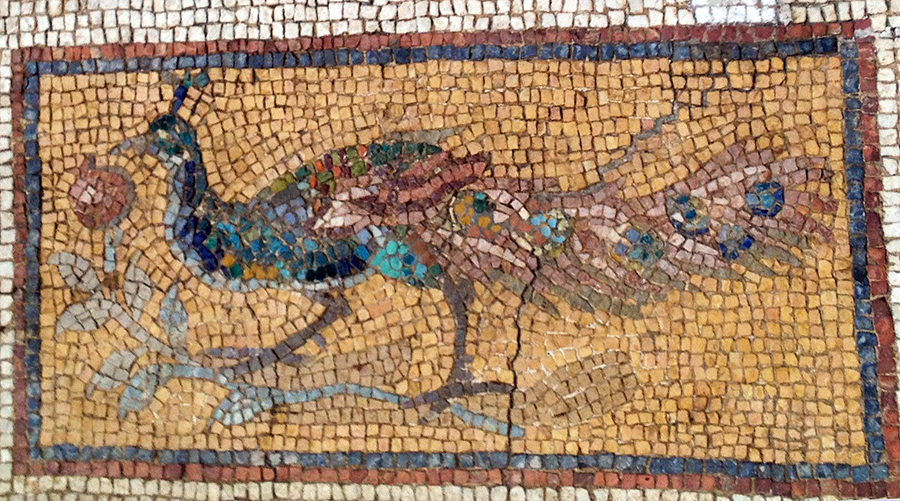
You can find it here: http://users.stlcc.edu/mfuller/antiochMosaicsBaltimore4.html
The initial idea I had was a document oriented in a landscape position. Two peacocks (as it’s Her Majesty’s second reign) facing each other. Between the two peacocks, two oval or round badges, stacked, with the Consort’s arms as the top image and the A&S badge the bottom. Simple borders “line” the images into a “unified” mosaic. Words would be above the image in a rectangular block. After playing with digital layouts, I settled on a similar design, placing the two badges side by side instead of stacked.
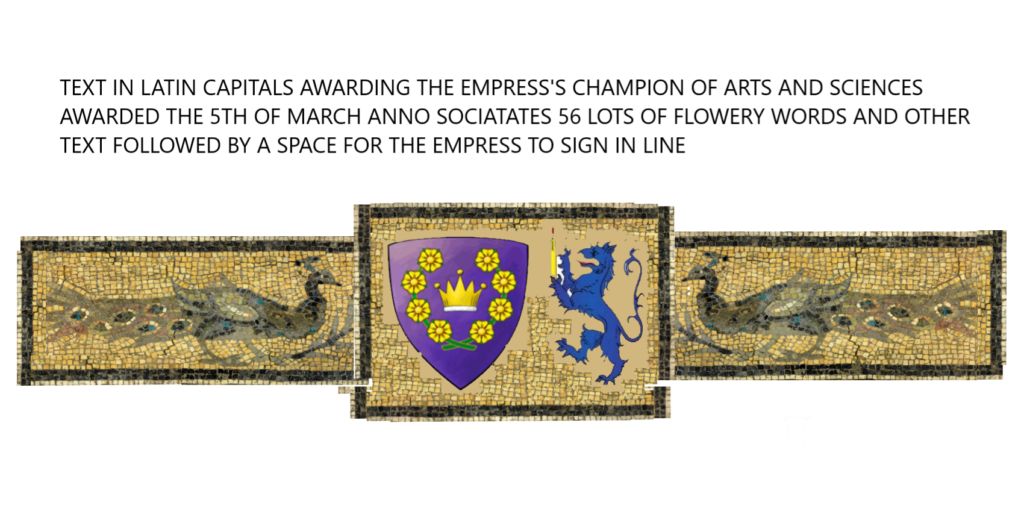
And then I began to wonder about the words. A Roman inspired scroll should probably be in Latin. I immediately thought to contact Domina Fortunata, who has a talent for both Latin and wordsmithing, and was delighted when she consented to assist. We discussed how I felt to have been chosen as Consort’s A&S Champion, and how artistry can move the heart of the Empress. She composed beautiful words in a Latinate prosody style that encapsulate the idea I was trying to describe.
The words in Latin:
Narrete nobis, O Musae, historiam herois. Impartite quae cogitonem artificis semetipse Imperatricem Orientalis iniecit; velut Pygmalionem Galatea, Sapientia philosophos, Daedalo Innovatio iniecerunt. Ante diem tertium Nonas Martii, in anno quinquagesimo sexto ab Societate condita, decernitur <Insert name here> Heroem Reginae Artibus et Scientiis
And the translation:
O Muses, tell us the story of a hero. Impart some knowledge of the artist who inspired the Empress of the East; like Galatea inspired Pygmalion, as Reason inspired philosophers, as Innovation inspired Daedalus. Three days before the Nones of March in the 56th year from the founding of the Society, <Insert name here> is declared Queen’s Champion of Arts and Sciences.
I chose to do the calligraphy in what David Harris calls “square capitals” in his text The Calligrapher’s Bible. It dates to the 4th century. After I taught myself the hand, it was time to put pencil, ink, and gouache to pergamenata.
I started by drawing out the lines for the calligraphy and the block outlines of the images.
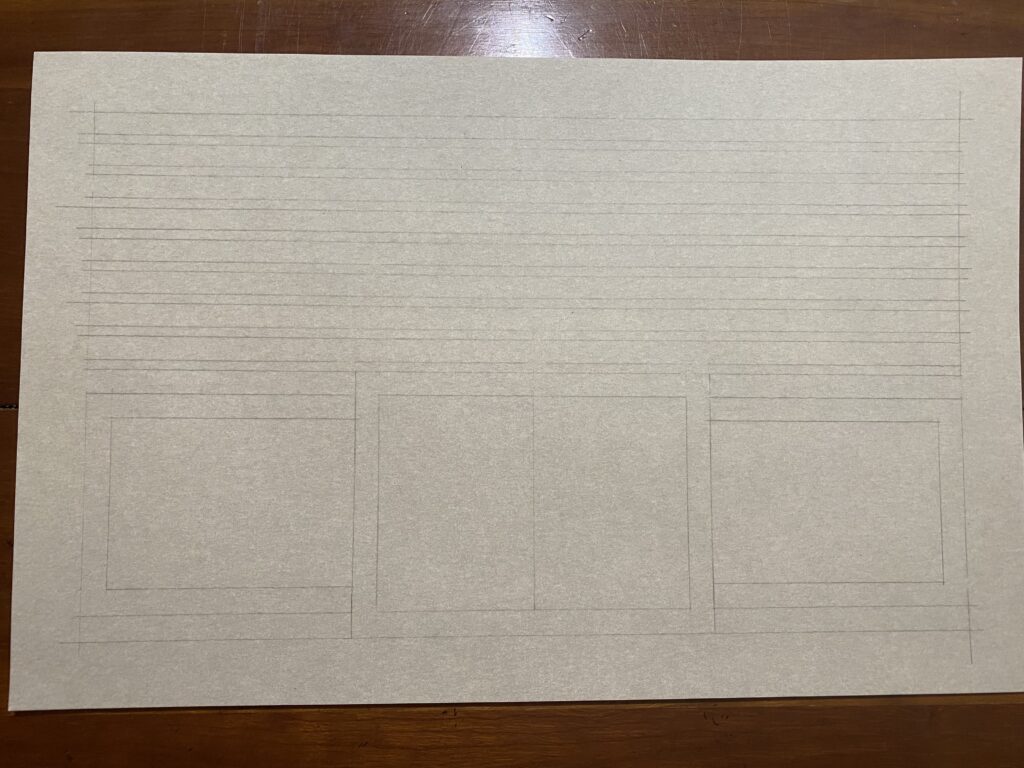
After some practice on a piece of perg (I was previously practicing on artist paper, the difference is astounding, perg being a much smoother surface, the pen glides on it!) I then did the calligraphy with a dip pen.
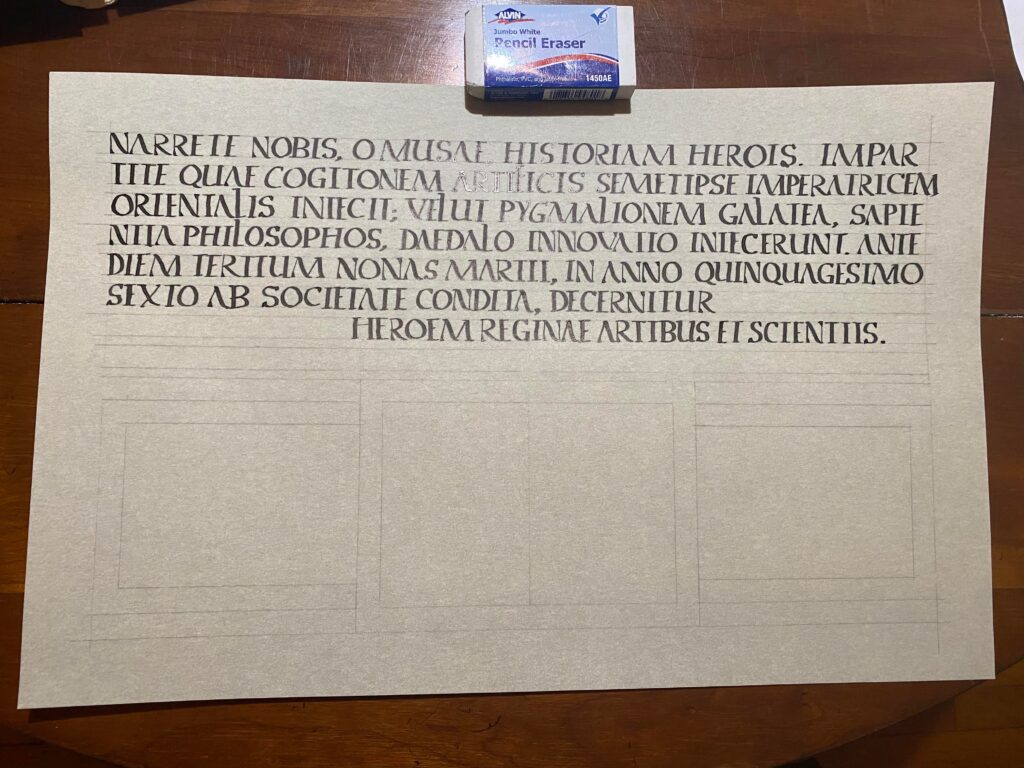
After the calligraphy was complete, I painted a practice piece on the same perg I practiced the calligraphy with most of the mosaic image; one peacock, the Queen’s arms and the A&S Champion’s badge, Sparky, the blue tiger, holding a lit candle. The faux tiling looked good, but the Queen’s arms looked absolutely awful. While I was debating what to do, the Sovereign’s Champion shared his progress with me. I noticed that he didn’t include the King’s arms on his document and knew exactly what to do. I decided to omit the Queen’s arms from my document. And I’m so glad I did.
I redid the pencil outline for the mosaic blocks and instantly felt confidant in the design choice. It was more balanced. It looked more like the hundreds of images of mosaics I poured over.
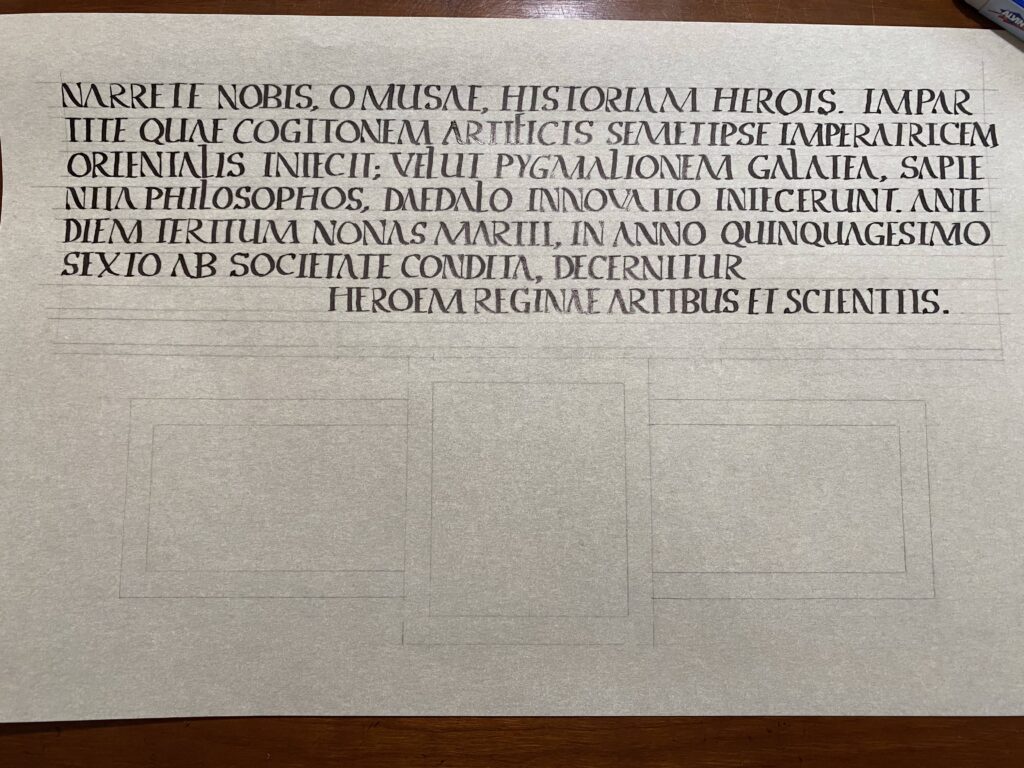
I then traced the charges using my light pad. The document remained taped to the light pad until complete to alleviate any warping that might occur while painting. I do this with all my scrolls made with pergamenata.
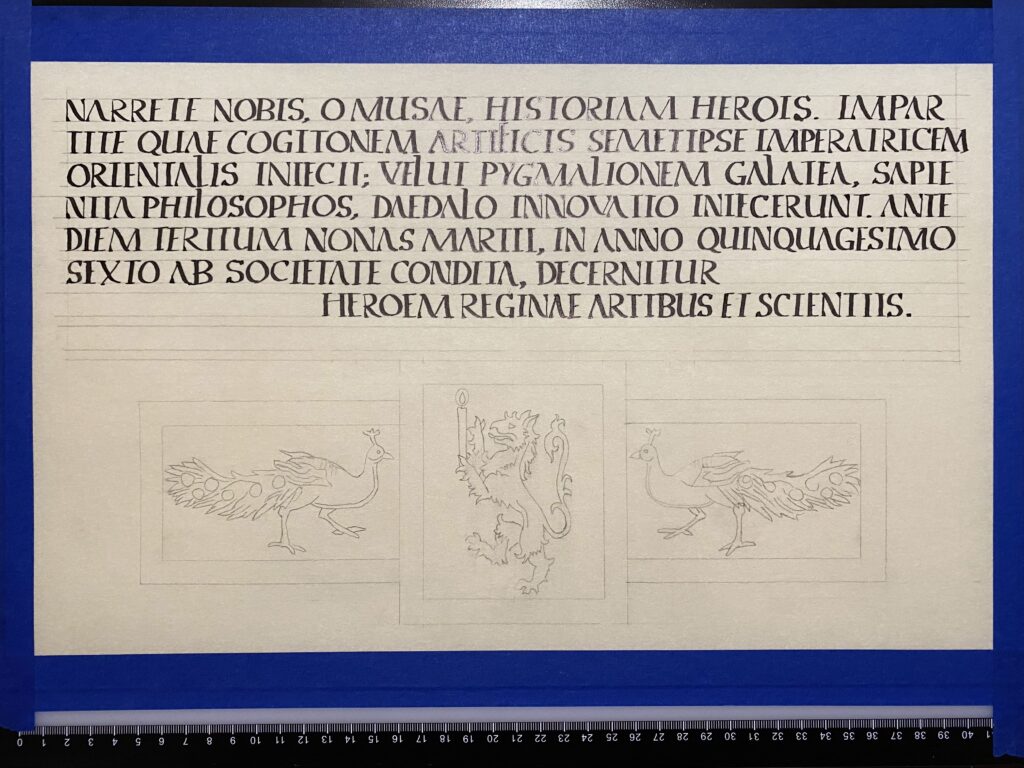
And added some guiding border detail.
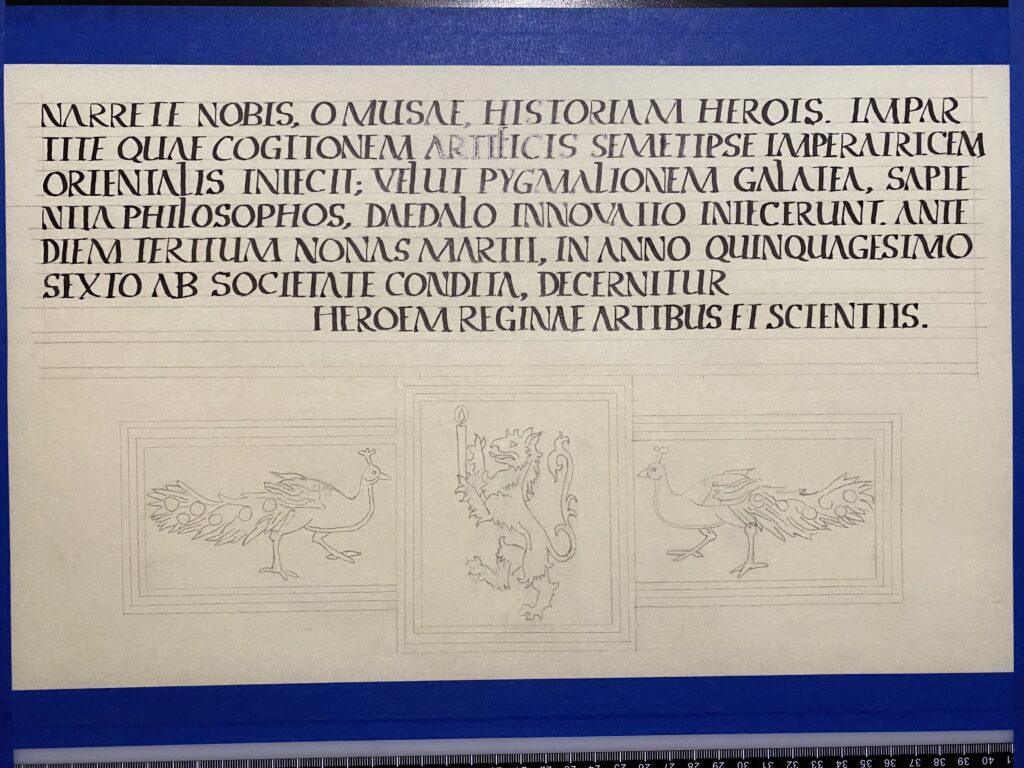
As to the technique for painting a mosaic style scroll, I drew process inspiration from Magistra Audrye Beneyt’s mosaic scroll for Gauis Claudius Valerianus, Her advice on this project was invaluable. The process is basically to paint in the broad swaths of not very well blended color and then go back with a particular color and paint each tiny little grout line. Thousands of tiny squares.
First I painted the background color.

Then the border. I chose shades of blue to keep a very blue and gold East Kingdom populace colors theme and add unity between the peacocks, Sparky and the border.

Continuing with the blue, I painted Sparky and the peacocks.

A dark brown for the peacock’s legs.
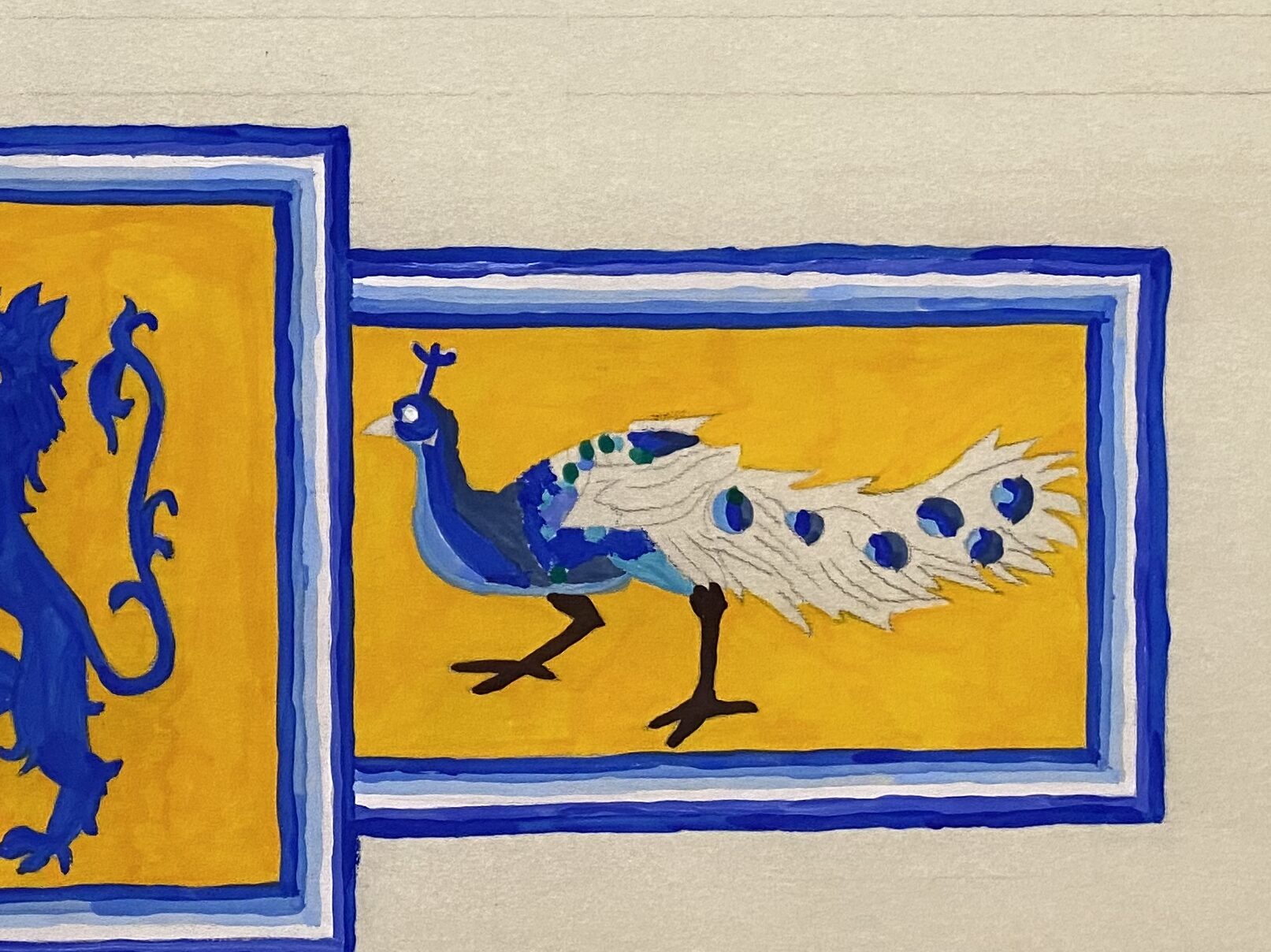
Some peachy pink feathers. The feathers are one block/tile high.
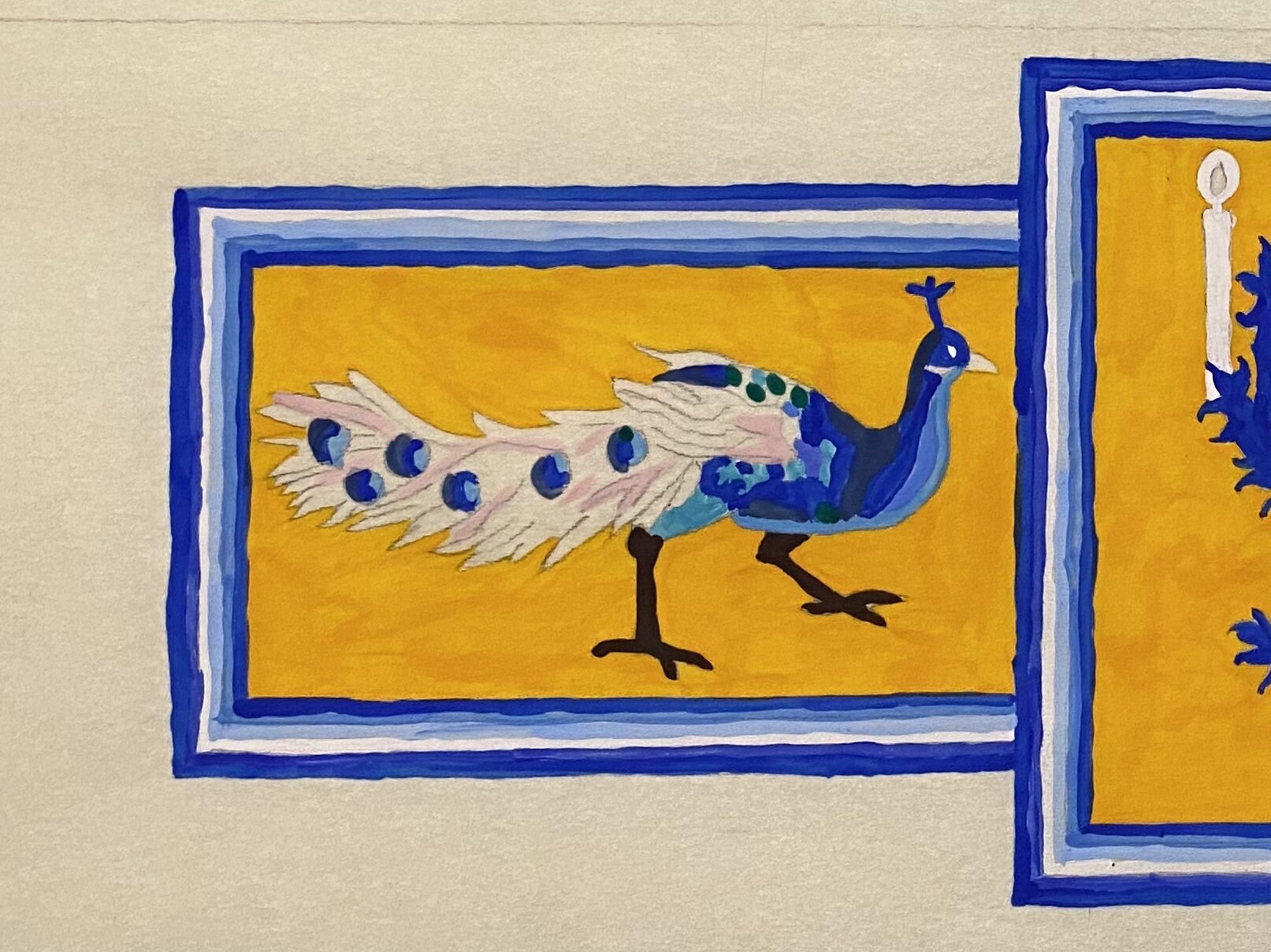
Then the darker red shades and other detail.
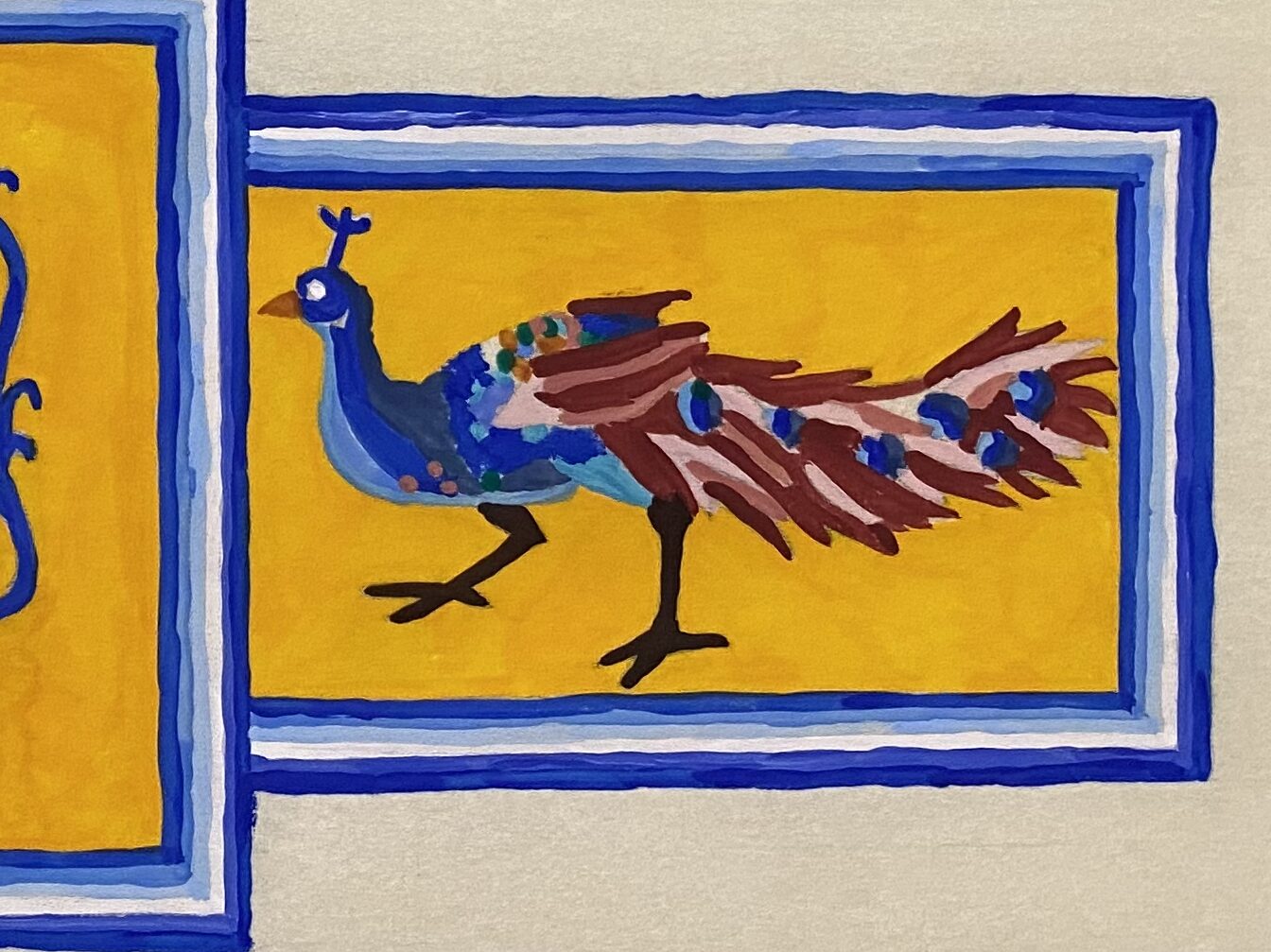
Sparky’s tongue and the candle flame.
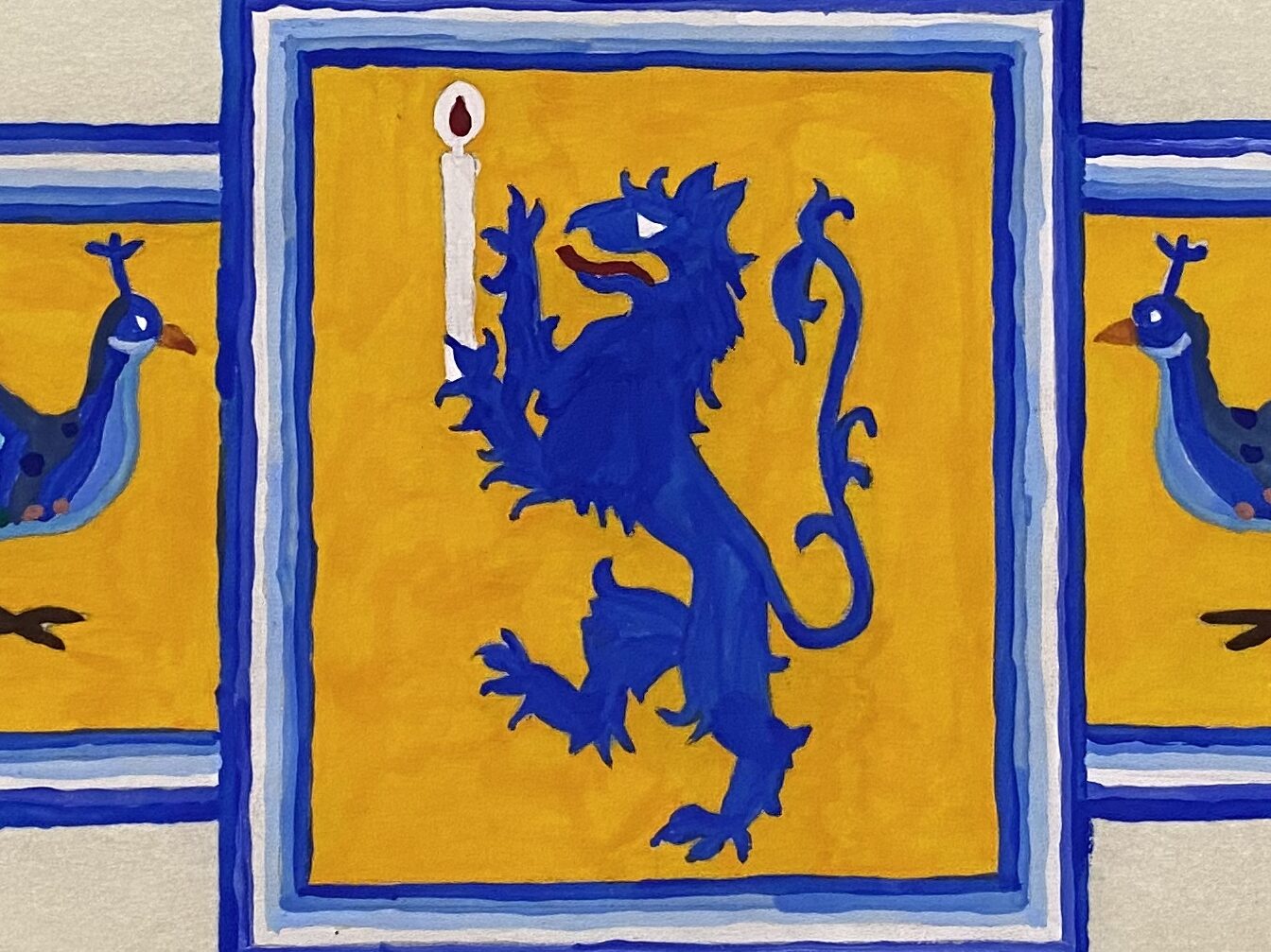
And then I started the grout lines.
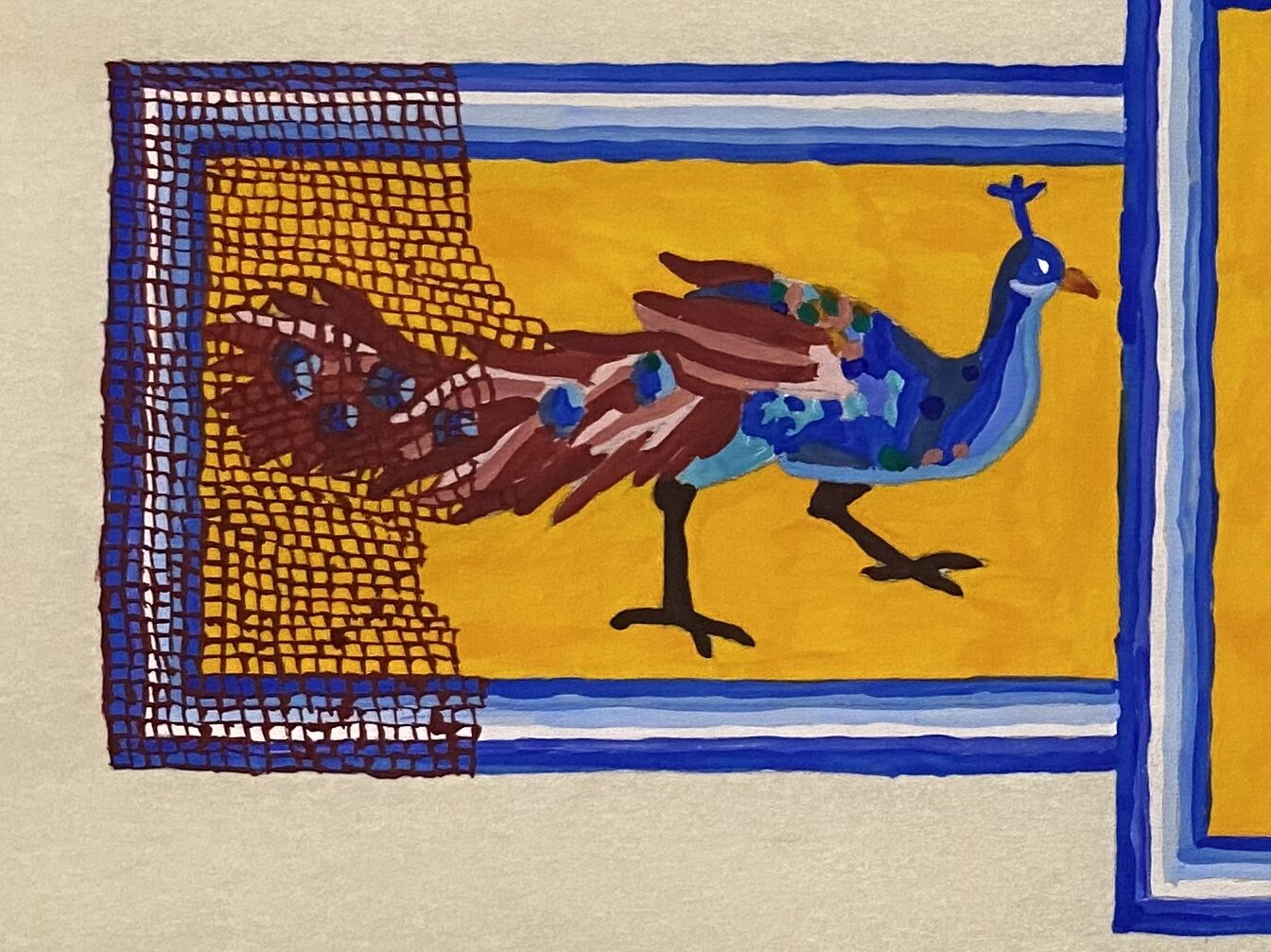
I finished one peacock.
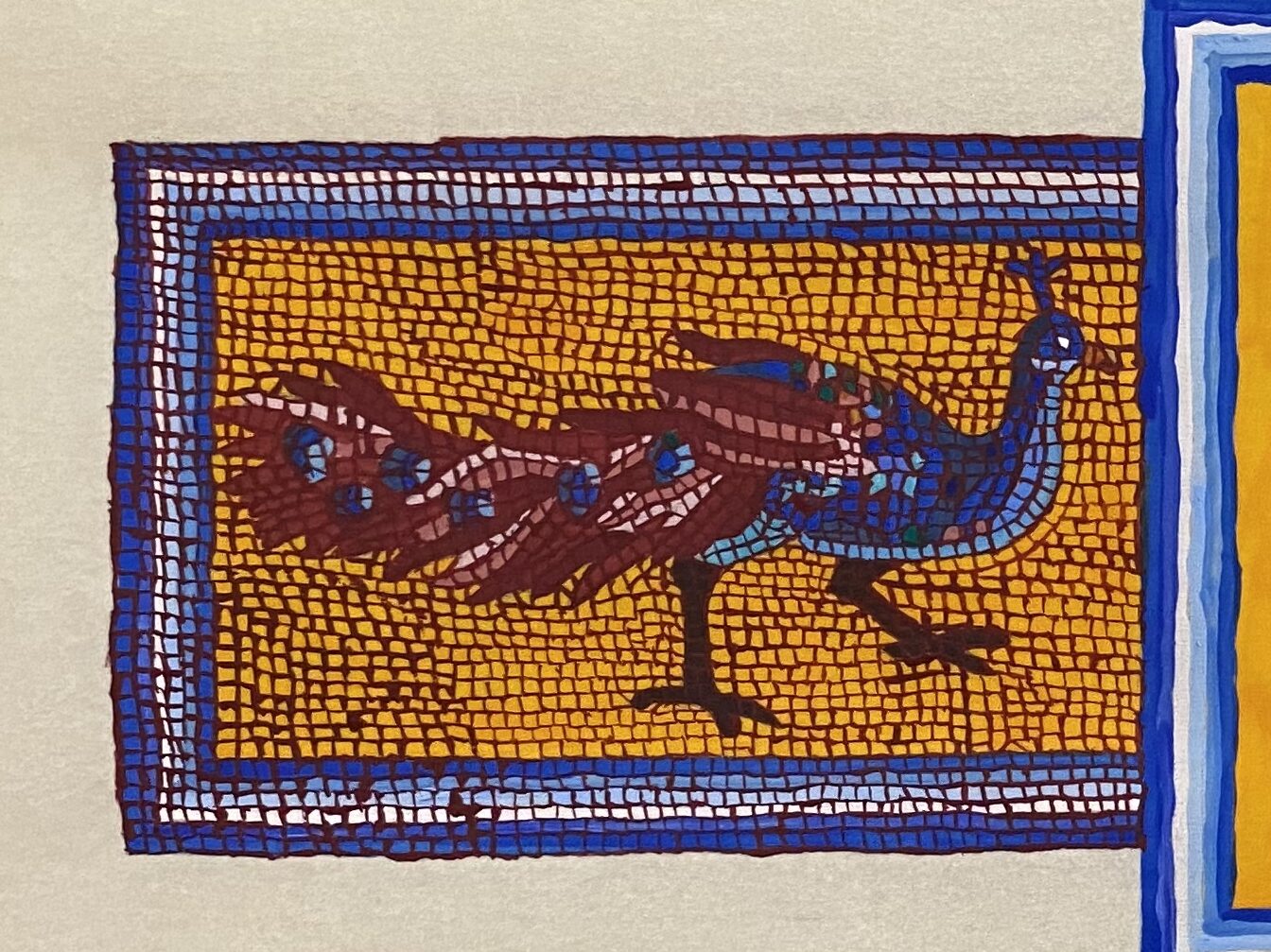
And continued on to Sparky.

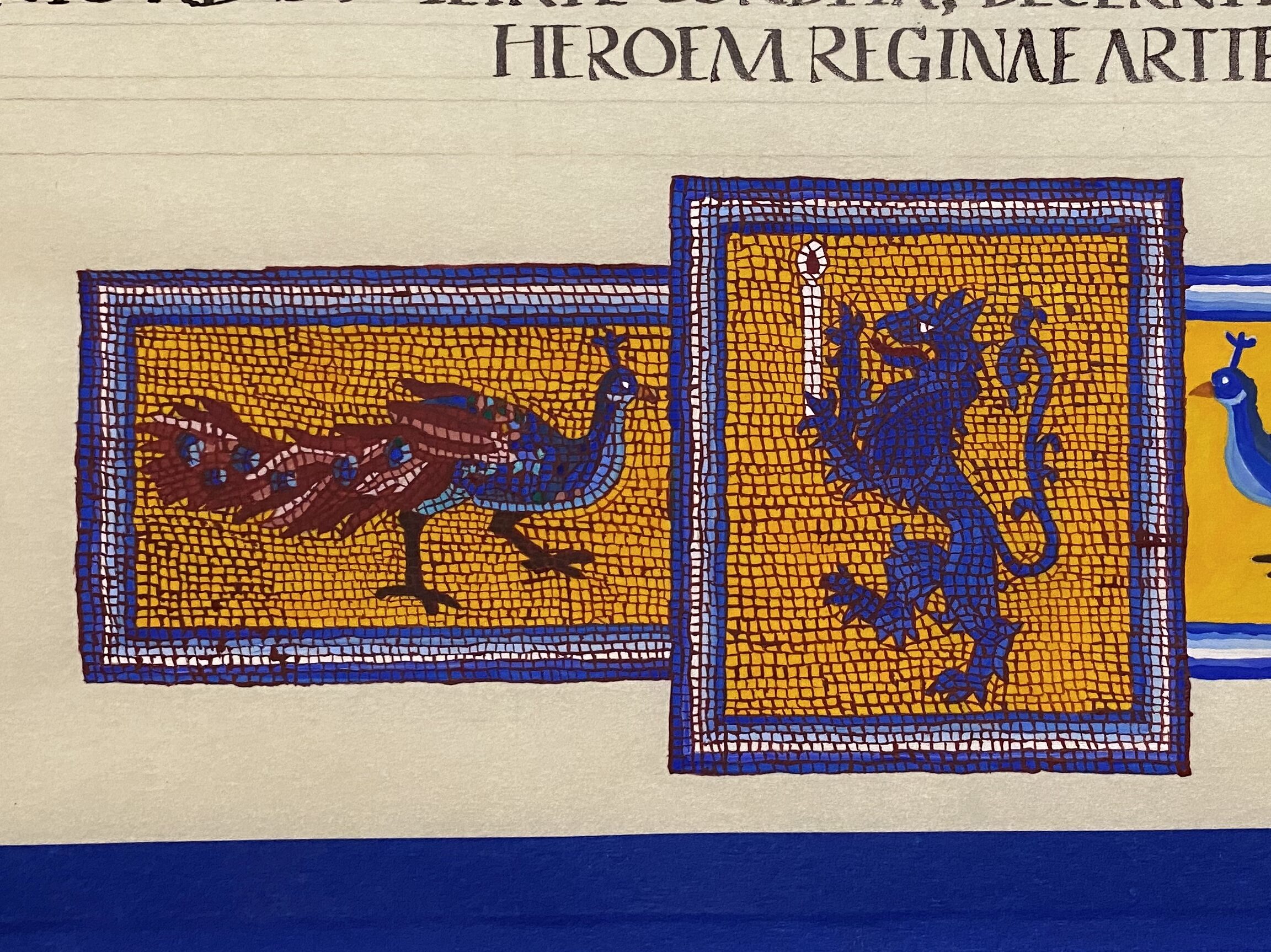
And finally finished it.
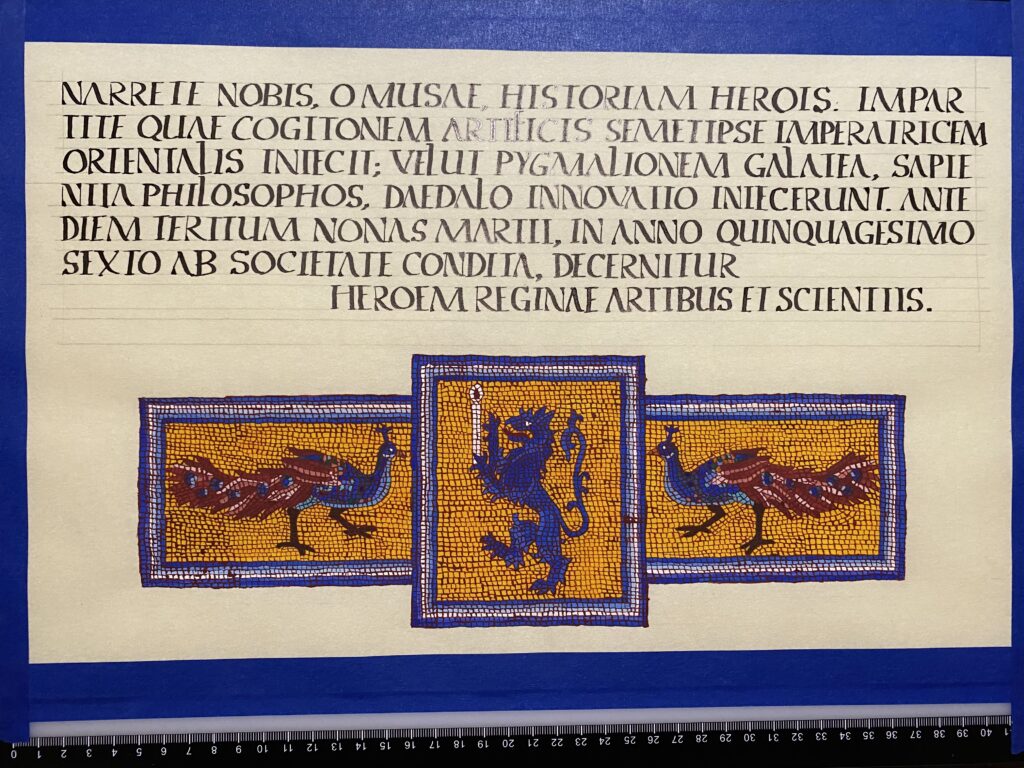
My hearty congratulations to The Honorable Lady Ysabel da Costa, the new Queen’s Champion of Arts and Sciences. It was a privilege to create this award document.
